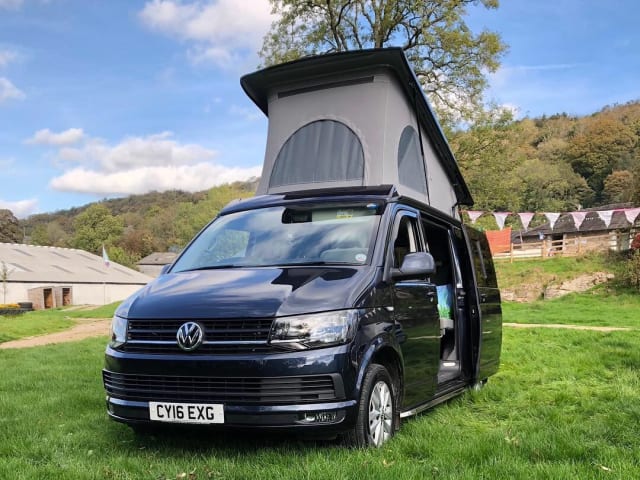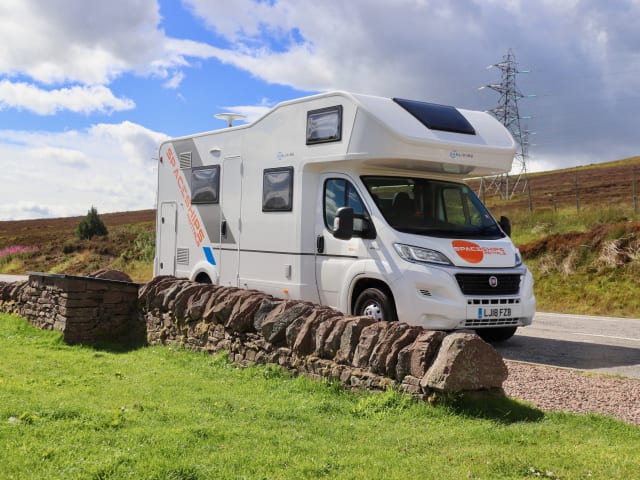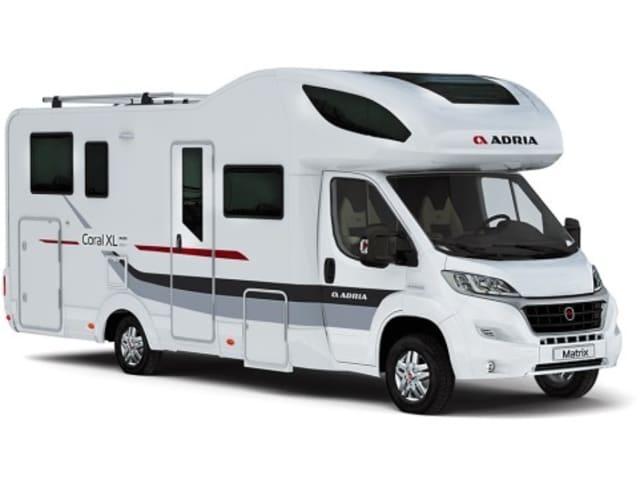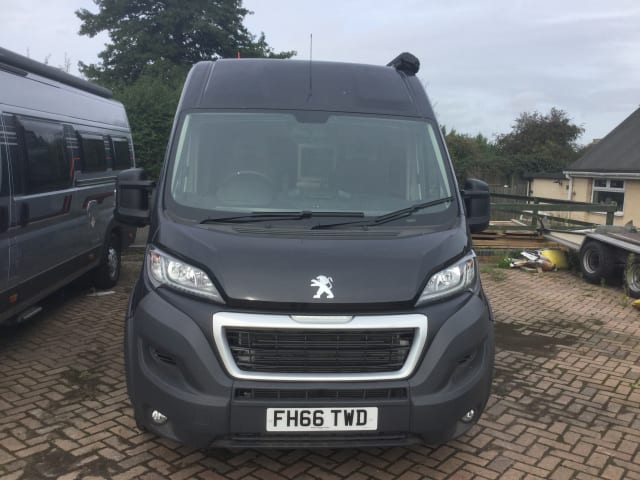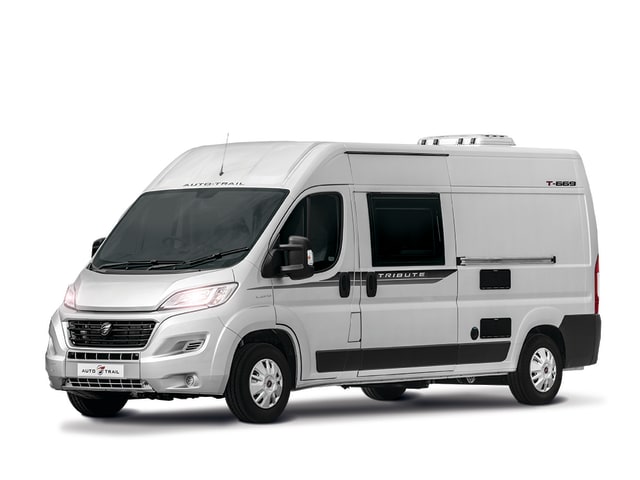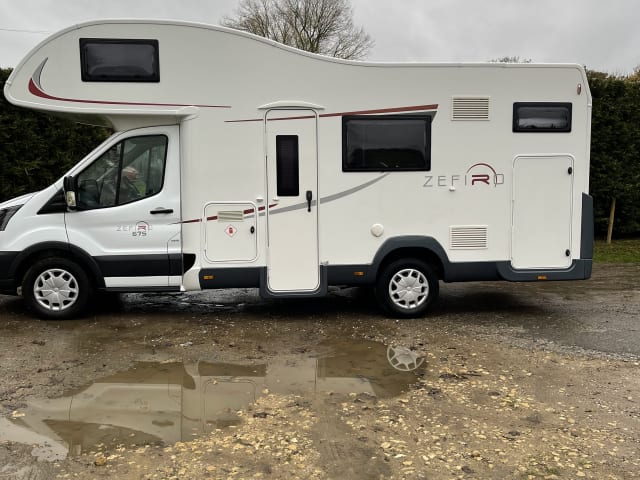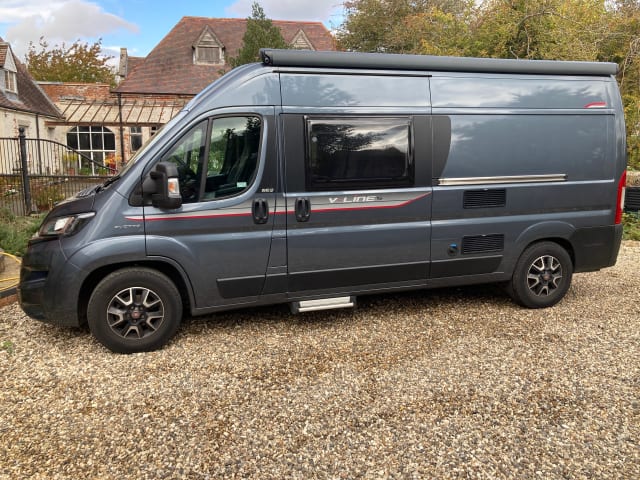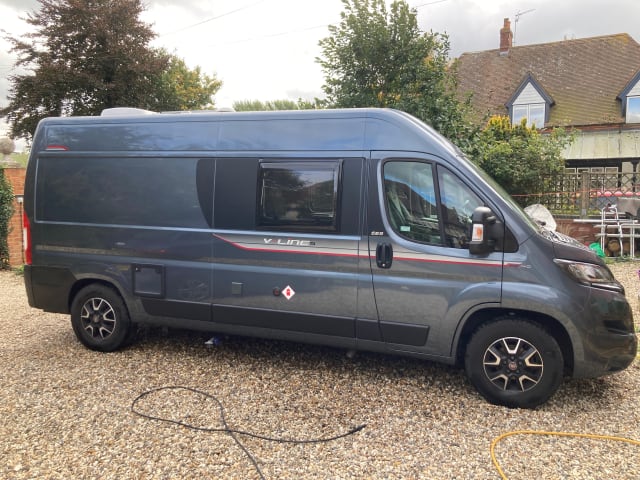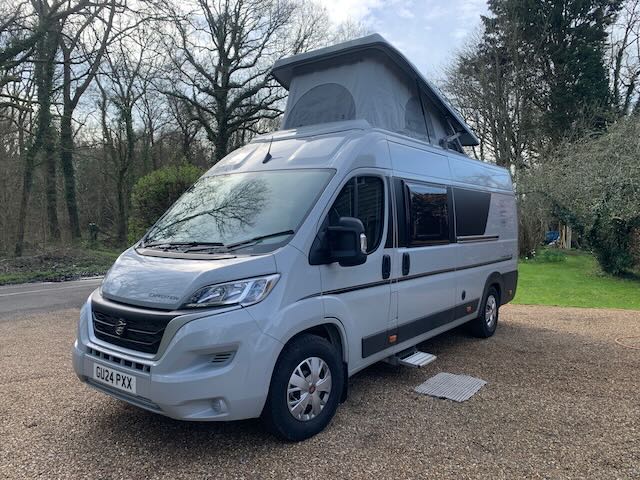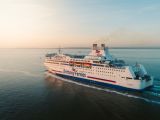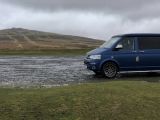The ring road is Iceland’s number one road trip. Also called route one, this 830-mile road trip connects the country’s major cities with its most unmissable sights, offering options for detours which allow you to explore hidden gems as you go. Whilst almost every landscape is National Geographic cover-worthy, the more time you have to explore this captivating country, the better. We have planned the itineraries for 5, 7, and 10-day road trips that you can do any time of year, starting and ending in the capital city and following the ring road anticlockwise around the land of fire and ice.
Before you go
For the best weather, head to Iceland in July and August. You’ll also have the longest daylight hours, thanks to the infamous midnight sun. During the summer, you don’t necessarily need to have 4x4 wheels, but we’d recommend it for getting onto Iceland’s F-roads, as this will open up more incredible sights. If you’re thinking of road tripping in winter, you’ll definitely need a car that can handle all weather and has 4x4 drive. Whilst a diesel vehicle might be the most reliable, also bear in mind that it’s worth finding something fuel-efficient – gas in Iceland is not cheap! Prices of campsites vary wildly, but you can expect to pay less than £20 per person per night.
When on the road, also watch out for free-roaming sheep, awe-struck tourists who may not expect to meet another car, and service-station hot-dogs – your best bet at a delicious, affordable snack on the road! Bear in mind that the weather is as astronomically changeable as the landscape itself, so pack for all eventualities. Bring more water with you than you think you’ll need, for yourselves and your vehicle, and remember that distances between service stations can be long.
Iceland itinerary: 5 days
-
Blue Lagoon
We recommend that you explore the Reykjanes Peninsula first, before heading to the world-famous Blue Lagoon spa. Going after 6pm means you’ll beat the crowds. Nearby attractions include tours inside a lava tunnel, a bridge across the continental plates, Gunnuhver hot springs, and the stranded ships of Hopsness near the lighthouse.
Just 3 miles from the Blue Lagoon, stay at the Grindavik Campsite. They boast the best facilities in all of Iceland’s campsites, including a heated indoor area with a well-equipped kitchen for sheltered dining on a rainy day, and best of all – the whole area is rich with geothermal energy, so you don’t have to worry about running out of hot water for your shower.
-
The Golden Circle
Go on a self-drive tour of the Golden Circle, only 45-minutes out of Reykjavik. Stops on this 190-mile loop include the Kerid Crater, the world-famous Geysir area (a geothermal field of hot springs, exploding geysers and bubbling mud pools), the Gullfoss and Bruarfoss waterfalls, and the Thingvellir national park, where two continental tectonic plates meet along the Great Atlantic rift, and the world’s oldest existing parliament was formed.
Stay at Reykjavik Eco Campsite. This is probably one of Iceland’s top sites with a climate-friendly ethos, and it makes the perfect base for exploring the Golden Circle. It’s 5*, can accommodate up to 600 travellers, and is open all year long if you want to brave the winter roads. It has hot water, a swimming pool, BBQ facilities, internet access, laundry facilities and a shop, so you can enjoy amenities within easy reach, a novelty after the last few days! There’s no need to book in advance, just show up and find a spot for your vehicle.
-
North Iceland
Along the northern stretch of the ring road, Iceland’s Godafoss is a huge, horseshoe-shaped waterfall with clear blueish water. There are parking lots on either side and you easily spend a couple of hours walking and taking in the sight. If you have a 4x4, driving 45-minutes along a gravel track will take you to Alderjayfoss, and it’s worth the trek. This otherworldly waterfall is framed by uniquely symmetrical basalt columns and seems to erupt from nowhere out of the rock. It might be a day of waterfalls, but there’s really nothing like them anywhere else in the world. Last but not least is Selfoss, on the other side of Lake Myvatn. Whilst passing through Reykjahlíð, it would also be worth taking a tour around Grotagia Cave (if claustrophobia doesn’t bother you!). 
Stay at Látrabjarg Campground. Close to the town of Breiðavík, this site has showers, kitchen and laundry facilities, and a spot to host a BBQ. You’re also less than an hour away from Rauðasandur, a sandy reddish-gold beach. It’s another great daytime activity in this area aside from bird watching.
-
East Iceland
Also known as Austurland, the eastern tip of Iceland is full of hidden treasures. These include the Holmanes nature reserve, with its birdlife, rock formations and reindeer herds. If hiking is your thing, stretch your legs on the 5.5-mile Waterfall Circle trek. The nearby Hafrahvammagljúfur canyon is one of the country’s most impressive canyons, let alone words to pronounce. It’s over 200 meters deep and stretches 5 miles towards the Jökuldalur valley. Also check out Hengifoss, Iceland's second-highest and a particularly impressive waterfall, where layers of tertiary lava strata glow red in the cliffs, and the Litlanesfoss presents huge stands of basalt columns on both sides of the gorge.
Stay at Egilsstaðir campsite. East Iceland is a bit more remote than other parts of the country, and Egilsstaðir is its biggest town, so it’s also a good time to stock up on food and essentials. This campsite features all the standard conveniences campers could hope for, including toilets, cooking facilities, and washing machines.
-
Southeast Iceland
Explore Vatnajökull National Park. The so-named glacier is the largest in Iceland, and the whole of Europe, covering 8% of the country. It is about 1300 feet (400 meters) in-depth and about 3100 miles (8100 square kilometres) long. Explore the glacier caves, go on a short hike to Svartifoss, Iceland’s ‘black waterfall,’ visit Jökulsárlón glacier lagoon where you might see seals playing on ice floes, and walk along the Diamond Beach just across the road. This might be the only place in the world where you can see chunks of ice from a glacier dotted along the beach, let alone one of sparkling black sand. The nearby village of Hofn is worth checking out on your way back to Reykjavik. Hofn is famous for its langoustines and has a lobster festival (Humarhatid a Hofn) in the summertime.
 Stay at Skaftafell Camping. Nestled at the base of Vatnajökull, it’s one of the most beautiful campsites in Iceland. Note that you need to register in advance – at least two months. There’s room for 400 tents so no designated pitches apart from those reserved for campers and caravans needing electricity. There’s a shower block, washing machine, dryer, kitchen sinks, and the site is covered by 3G and wireless internet. It’s a 4-hour drive along the ring road back to Iceland’s capital city from here. back to Reykjavik from here.
Stay at Skaftafell Camping. Nestled at the base of Vatnajökull, it’s one of the most beautiful campsites in Iceland. Note that you need to register in advance – at least two months. There’s room for 400 tents so no designated pitches apart from those reserved for campers and caravans needing electricity. There’s a shower block, washing machine, dryer, kitchen sinks, and the site is covered by 3G and wireless internet. It’s a 4-hour drive along the ring road back to Iceland’s capital city from here. back to Reykjavik from here.
Iceland itinerary: 7 days
If you have time, there are a couple of detours you should definitely add to your Iceland road trip.
-
Spend a day in Reykjavik
Whilst you might not have picked Iceland as your road trip destination because you’re a city person, it’s worth spending a day in Reykjavik if you have the time. It’s modern, creative and with a unique ‘Viking hipster’ vibe. Of Iceland’s 320,000 people, 216,950 live in the capital region. So, you might not have met too many locals on your travels yet, and hanging out in the city is a great way to do that. Also take a look at the Sun Voyager statue, the Hallgrimskirkja church (which looks very similar to the magnificent basalt columns of several waterfall’s you may already have seen) and pay about £6 to climb the tower and see the most magnificent view that stretches to the mountains and sea beyond the city.
-
Detour to the Snaefellesness Peninsula, west Iceland.
Take this detour off route 1 when you get to Borgarnes, about 2 hours out of Reykjavik. Turn onto Snaefellsyegur (Route 54), which takes you onto the peninsula. Home to Kirkjufell, one of Iceland’s most iconic landmarks, this (relatively) small national park is a legendary area of beauty and magic. Check out the Gerduberg cliffs, just a 1km walk-off route 54, and the stunning black Budir church that stands out in front of sweeping volcanic mountains as you drive towards Hellnar. There are two black sand beaches - Djúpalónssandur and Dritvík – which are two of the few places where you can go right down to the sea along this coast. The debris of two old shipwrecks from decades ago still spread along the beach, as well as huge stones that local men once had to lift to test their strength during the fishing era. Men who couldn't lift at least the rock weighing 54 kg were declared unsuitable as fishermen! And, of course, Kirkjufell (Church mountain), which you can either walk around or up depending on your fitness levels and sense of adventure!
Stay at Stykkisholmur campground. Right next to Vikurvollur golf course, it’s only 5 minutes walk to general services like shops and restaurants (and a swimming pool!). It’s a wireless hotspot, has toilets in two locations, washbasins with hot water, freshwater taps and two outdoor showers with hot water. There’s a chemical waste facility for campervans, washing machines and dryers and electricity available for campers.
Iceland Itinerary: 10 days
If you have 10 days to dedicate to it, these stops will complete your unforgettable trip.
-
Landmannalaugar
These remarkably colourful rhyolite mountains are found in the highlands, slightly inland of the southern tip of the island. Dedicate some time to exploring this area on foot by hiking, if you can, and take a dip in the geothermal pools at the mountain’s feet. In the summertime, the rocks are at their most vibrant, but in the winter, the Northern Lights can be spotted any time.
Stay at the base camp. The tourist facilities are fairly impressive. A big, two-floor mountain hut is located in the centre, owned by the Icelandic Touring Association. There’s a spacious sleep cabins inside, or a large campground surrounding the outside. The ground is quite stony so it’s better for campervans than tents. The campsite also offers roofed cooking facilities and a dining area, with excellent sanitary facilities available in another heated building. There’s also a warm bathing pool is situated a short walk from the showers.
-
Lake Myvatn and the Whales of Eyjaford
Whilst in the north, stop at Lake Myvatn to check out the pseudo-craters of Skútustaðagígar. Other highlights in this area, include Hverir Mud Pools, Grjótagjá Rift, Dimmuborgir Lava Fields and many more. Soak after a long day in the Mývatn Nature Baths: a completely natural pool of geothermal water-based in the middle of lava fields with a great view over the area. Take off on a whale watching tour from the Akureyri pier. Eyjafjord is Iceland’s deepest, and you can spot humpback whales, Minke whales, Blue Whales and White-beaked dolphins feeding in the summertime.
Stay at the camping site in Akureyri, which is open from the beginning of June until the 15th of September, and has hot water showers, electricity, internet, toilets, swimming pool, a washing machine, and waste disposal for campervans.
-
The Westman Islands
On the way back to Reykjavik, take a ferry from Landeyjahofn to the Westman Islands and stay the night. Meet friendly locals who greet increasing numbers of visitors to their tiny island home, see puffins (the islands are home to the largest Atlantic puffin colony in the world) and other marine life up close by kayak or boat, hike or bike around the islands and eat unique Icelandic food, like pickled shark or ‘thunder bread,’ from the restaurants here that are also becoming increasingly well-renowned. Be sure to visit the museums to learn about these tiny island’s rich (and precarious!) natural and cultural histories, too.
Stay at Glamping and Camping Vestmannaeyjar.
Are you ready?!
It’s a silly question - you’ll never be ready for one of the best road trips in Europe. Travelling to Iceland for a road trip is one of those once-in-a-lifetime experiences. You’ll see exploding geysers, glittering glaciers and they grind into pools of freezing water still as liquid mercury, steep volcanic outcrops dotted with seabirds, and waterfalls pounding intro bright green fjords. It won’t be the cheapest trip you’ll ever do, and will take some preparing for the elements and any eventualities in this raw, rugged landscape, but driving the ring road is the best way to truly experience Iceland. Be sure to bring your best camera to capture the trip!
Check out our tips for your first motorhome trip. We've also got a comprehensive campervan packing list prepared for you, so that you can just focus on your Iceland road trip plan.

Vatnajökull glacier from beneath


